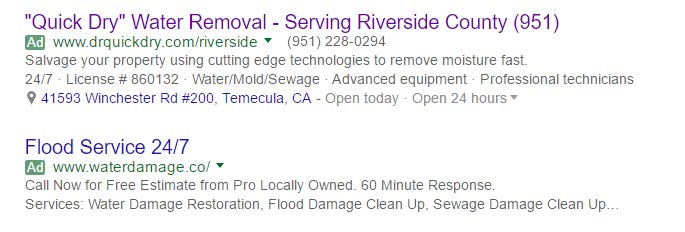

Golden Rule #1 of 20
Insert a Hyper-Local Phone Number
Inserting a Hyper-Local phone number, based on the geographic location of the visiting browser, can mean serious increased conversion rates. See how!
Here’s what we’ve learned:
When people don’t already know you, they are more likely to call a local number over a toll-free number. Test it for yourself. Let’s say you live in Newport Beach, CA (that’s our headquarters), would you rather call a phone number that started with (949), or a number that started with an (800) or (866) area code?
The answer is you would probably prefer to call the local (949) number.
From a transaction perspective, toll free numbers are Sacred Cows.
What’s a Sacred Cow?
In this case, we’ll say it’s a business practice that is immune from questioning. It’s something that is done, “because it’s always been done this way” and nobody thinks to challenge it.
Go ask ten random people what their long distance bill was last month. Watch them scratch their head and look at you funny and say, “I’m not sure.”
They’re not sure because THEY DON’T HAVE A LONG DISTANCE BILL. As a matter of fact, most of us stopped paying long distance around year 2008. So, what good (for transactions) is the toll free (e.g. 800, 877, 866) number? If you think about it, a toll free number is actually the anti-communication line as it does not tell the end user where you are located.
When people who don’t know you see a toll free number while searching for the products and/or services you offer, in the back of their heads they think:
- Worse-case scenario: My call will be routed out of the country.
- Best-case scenario: My call will be routed to a huge phone tree and it will take me forever to talk to someone that cares
The Bottom Line is that the prospect thinks “there’s no way anyone is going to actually answer that phone” so they don’t even bother calling it.
This is the era of authenticity. Buy local. Farm to table. Use local numbers.


Jason Lavin
CEO at GoldenComm
As a matter of fact, our own GoldenComm statistics show that callers are 5x more likely to call a local number over a a toll-free number, and a whopping 7x more likely when that local number has a name attached to it (e.g. below, Talk to Jason).
OK – so local numbers are good. That’s not too hard to understand. But the real magic here is dynamically inserting a Hyper-Local phone number based on the location of the visitor’s IP address.
The acronym for this is “DNI” – meaning Dynamic Number Insertion.

Here’s a case study for you
We have a client named Quick Dry and one of the many services they offer is water removal. Their CEO called us and wanted to generate more business for his flood services. This project had hyper-local written all over it.
The first thing we needed to do was make a website that had our hyper-local technique programmed into it. We built the site in about 45 days and it is called: DrQuickDry.com
If someone in Riverside County uses Google to search “flood services” what they see is:

Of course, several things have to happen to get the “quick dry” ad on the top like this, but one key element here is the presence of the local phone number. Notice the other ad does not show a local number…in this instance we win almost every time.
Now, once they click on the ad, here is the landing page.
Notice on the page that we used three phone numbers that cover San Diego and Riverside counties. This gives the person that searched for “flood services” the feeling that the company is local to them.



Jason Lavin
CEO at GoldenComm
So there you have it. Golden Rule #1 – Insert a Hyper-Local Phone Number. Just beware, your phones just might BLOW UP if you try this, so get ready to answer the calls.
Finally, a lot of people ask us, “Should I get rid of my toll-free numbers altogether?” The answer is “probably not.”
This Hyper-Local technique really only creates results like this when people are looking for the products or services you offer, but don’t already know you or your company.
Meaning, if they see your advertisement via non-branded pay-per-click, or other local advertisement, this works great. But if a customer already knows you, then they are fine calling the toll-free number, and it actually can give you some longevity swagger and a good customer service reputation – so don’t turn them off, but certainly consider switching them out for local numbers on your pay-per-click advertisement and website.
Also, it’s worth mentioning that toll-free numbers are TERRIFIC for branding or memory purpose. For instance, 1-800-GOT-SCRAP is a client of ours. Their toll-free number is super powerful and easy to remember. And it’s part of their brand – don’t mix up branding advertisement and marketing with transaction advertisement and marketing, and these rules will work well for you.

